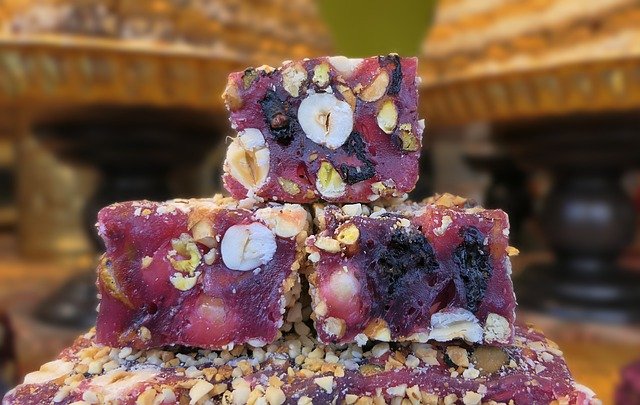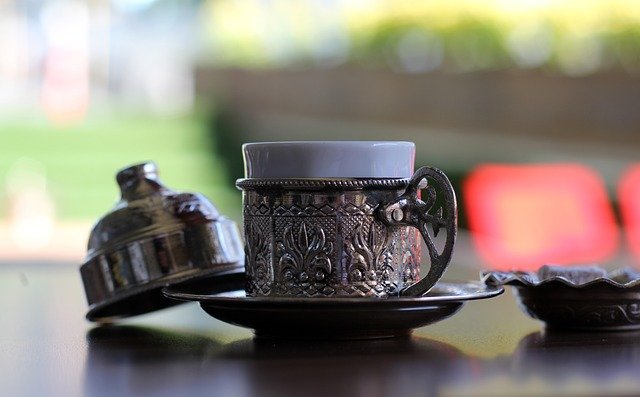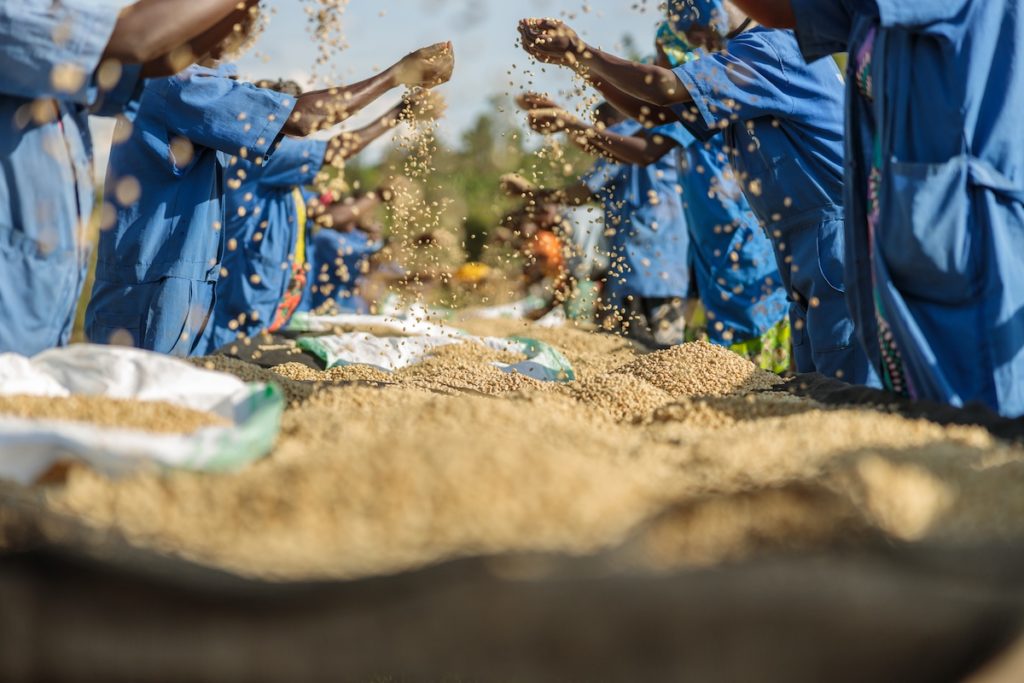A rich history and strong traditions are the foundation of Turkish coffee, along with its unique taste. It is not a common offering in many local cafes in the United States. It may be on the menu in some specialty cafes – you just may need to put some effort into your search. If you are already a fan or are interested in trying it, you might want to invest the time to learn how to make Turkish coffee at home.
Let’s take a step back in time to learn about the history of Turkish coffee.
It has a long history dating back to the Ottoman Empire. There are two variations to the story, one which says coffee made its way to the Ottoman Empire sultan from Ethiopia. The other version attributes Turkey’s introduction to coffee to Syrian merchants who traveled to Istanbul and opened the first coffee shop there.
Over time, the popularity of Turkish coffee grew in the region. Once thought to be reserved for noblemen and a symbol of wealth and status, it became more widely available to the common people through hundreds of cafes in different parts of Turkey.
By the middle of the 17th century, Turkish coffee’s popularity spread to Britain, France, and other parts of Europe by various means. The sultan and his ambassador gifted many of their European hosts with coffee and also traded it with countries such as Poland.
Before getting into the details of the Turkish coffee-making process, let’s learn about its attributes.
Let’s start by reviewing what can affect the taste of coffee. It begins with the type of green coffee bean (Arabica or Robusta) you choose and the region where it was grown. Green coffee bean processing and roasting methods also will affect the taste. Even the way the roasted coffee beans are stored and eventually ground will play into the resulting flavor. Finally, the brewing time and method used will play a role in the final cup’s taste and caffeine content.
What type of green coffee beans do Turkish coffee drinkers use?
Arabica beans, known as the premium coffee bean type, are usually the choice for Turkish coffee because of the smoother taste it produces. However, it is not uncommon for some Turkish coffee drinkers to use Robusta beans or even a blend of the two because they are more economical choices. Most people will recommend Arabica beans as it provides a smoother and less bitter tasting cup of coffee.
Historically, people made Turkish coffee using coffee beans from different regions since Turkey’s climate is not conducive to growing them. Therefore, when you learn how to make it, you have the freedom to choose Arabica coffee beans from your favorite region.
Which coffee bean roast level is best for Turkish coffee?
Most people will say roast levels for Turkish coffee is based on personal preference. Typically, coffee drinkers in Turkey prefer darker roasted beans. Avid Turkish coffee drinkers will likely recommend medium to dark roast beans.
- 3 lb. Bundle Dark: Green coffee beans great for dark roasting – from Honduras, Indonesia, and Brazil
Also, you will learn that foam is an important part of the Turkish coffee drinking experience. Foam comes from the carbon dioxide in the coffee beans. Darker roasts will have more carbon dioxide as they have a longer roasting time.
As you learn the steps to make Turkish coffee, you’ll find out the grind size is one of the main things that differentiates it from other types.
The powder-like coffee grounds used in Turkish coffee is unique. The fine grind gives your coffee a more robust flavor because it allows for a more complete extraction than other grind sizes. You should grind coffee beans for Turkish coffee even more finely than those used for espresso.
However, grinding it that finely may be difficult with typical coffee grinders. To get the best, finest grind, use a traditional manual burr grinder. There are Turkish coffee grinders that are specifically designed to create powder-like grounds. You can make slight adjustments to these Turkish coffee grinders to create espresso grounds, but they cannot create coarse ones.
There are commercial electric Turkish grinders available, but they usually require a significant financial investment. They are expensive because they need a powerful motor and a special set of burrs to help coffee drinkers grind the beans to a fine powder.
Enjoying a flavorful cup of Turkish coffee requires some energy, but you will find the flavors produced from the finely ground coffee beans to be worth the additional effort.
The brewing process for Turkish coffee is unlike that of other types of coffee.
The most noticeable difference is that you do not remove the grounds from the coffee cup before you serve it. The grounds are fully immersed in the pot without a filter and then poured into the cups when served.
Also, unlike other methods, you brew Turkish coffee in the pot as the temperature rises. This method is different from espresso (steady temperature) or pour-over and French press (decreasing temperature) methods.
Given all these differences in preparing it, how do they affect Turkish coffee’s caffeine levels?
Turkish coffee tends to provide a more concentrated caffeine dose than traditionally brewed coffee because of its smaller grind size and brewing method. Compared to filtered coffee, which has 40 mg of caffeine per 100 ml, Turkish coffee has 84 mg. This caffeine level is less than that of espresso, which has 180 mg per 100ml.
However, keep serving sizes in mind. A traditional Turkish coffee cup holds an average of 60-75 ml. A single shot of espresso is about 30 ml. That means a typical serving of Turkish coffee would have about 50 to 63 mg of caffeine, while one espresso shot would have 54 mg.
Now that we know its characteristics, we are ready to learn how to make it.
Let’s start by gathering the supplies you will need to make a traditional cup of Turkish coffee:

Cold filtered water
Finely ground coffee (Use a manual Turkish coffee grinder if available.)
Cezve – Also known as a Turkish coffee pot, a cezve is a wide-bottomed pot traditionally made of copper. Nowadays, they are also made of stainless steel, glass, aluminum, and ceramics. You can also use a very small saucepan, but it is not ideal because of its size. The cezve’s modest size restricts the liquid’s surface area while you warm it up. This smaller surface area allows more foam to build up.
Sugar (optional)
Spoon – You will need something to scoop the foam into the cups.
Steps to Making One Serving of Turkish Coffee
- Using the coffee cup you will serve the coffee in, measure out 1.5 half “coffee cups” of cold filtered water and pour it into the cezve.
- If you prefer to sweeten your Turkish coffee, now is the time to add the sugar to the cezve. Add the desired amount into the water before adding the coffee.
- Measure out two heaping teaspoons of finely ground coffee and add it to the cezve. Ideally, for an optimal fresh taste, grind properly stored roasted coffee beans when you are ready to make your Turkish coffee. (Note: If the aroma during brewing is not very strong, it may indicate that the coffee grounds you are using are stale. Another sign of stale coffee is if the grounds clump together when you hold some in your hand. And of course, using stale coffee grounds will result in weak tasting coffee.)
- Stir to combine coffee grounds with the water. Stirring the pot’s contents before moving it to the heat will increase the foam produced.
- Heat the mixture (low to medium heat) until right before it reaches the boiling point. This heating process may take around two to three minutes. A darker foam should develop on the surface.
- Once the foam accumulates and reaches close to the top of the cezve (and before the mixture begins to boil), remove the coffee from the heat. Boiling the coffee will cause the foam to dissipate.
- Spoon some of the foam into the serving cup. Pour the coffee into the cup, including the grounds.
- Before drinking it, let the coffee rest for a couple of minutes. This rest time allows the brewing process to continue as the grounds to settle to the bottom of the cup.
- You can add additional sweetener based on personal taste.
- Turkish coffee is traditionally served with something sweet such as Turkish Delight or chocolate. A glass of warm water usually accompanies a cup of this coffee to cleanse the palate.

Sip your Turkish coffee slowly to enjoy the robust flavor. People usually do not drink more than one cup because it is denser than traditional coffee.
Don’t throw out the grounds at the bottom of your cup right away.
After finishing their coffee, Turkish people would save the grounds for fortune-telling. The coffee drinker would put the saucer on top of the cup and turn it over. A fortune teller can tell things about a coffee drinker’s past and future by looking at the patterns left on the sides of the cup after it has cooled.
Traditionally, you would pass your cup on to someone else to read your fortune. You wouldn’t read your own fortune. There are many resources online that can help you learn Turkish coffee fortune telling!

Burman Coffee Traders can help you find the best Arabica green coffee beans for your Turkish coffee. Most of the coffee beans we carry are Grade 1 Arabica, the best coffee available.
Our experts can also help you through each step of the Turkish coffee-making process. Contact us with any questions. We would love to help you create the perfect cup of Turkish coffee.




I have made Turkish coffee quite a few times. Let me just say uniformity is not my strong point.Will attempt it again adhering to your methods. My electric grinder comes close to fine enough but am going to get a hand grinder and give that a try
I own a Rancilio Rocky grinder that seems to be adequate for finely ground Turkish coffee, as good as a recommended manual coffee mill. I home roast my coffee beans purchased from Burman coffee (-:
From video of visit to Istanbul coffee shops I have the impression they serve coffee from freshly roasted.